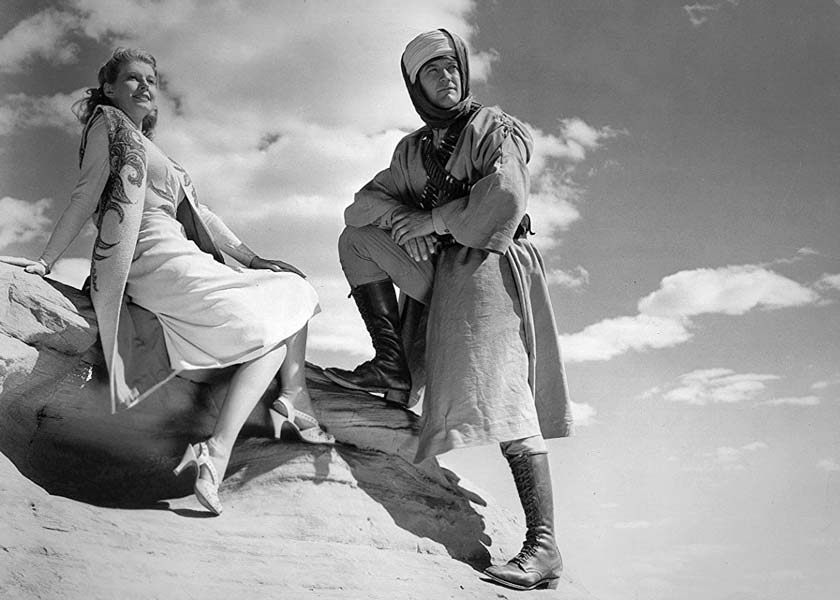Synopsis
The story is set in Morocco, North Africa, during World War II. In a town where Free French troops are stationed, Paul Hudson (Morgan) is a nightclub pianist, but in the desert he is the secret leader El Khobar of the Riffs, Arab rebels. The Riffs fight to gain freedom from forced labor on a railroad being built across their territory, and to stop the German military forces who are building it.
Colonel Fontaine (Cabot), the leader of the French troops, has been secretly aiding a local chieftain in the railroad project, but he does not know about the German involvement. Margot (Manning), a cafe singer newly arrived in Morocco, is pursued by both El Khobar and Fontaine. Anxious to capture El Khobar, Fontaine learns his secret. Persuaded that the Germans are the backers of the railroad, Fontaine joins forces with Hudson/El Khobar and stops them.
Discussion
The operetta The Desert Song, in which Arab rebels fight French colonialists, with score written by Sigmund Romberg, and book and lyrics written by Oscar Hammerstein II, Otto Harbach and Frank Mandel, opened on Broadway in 1926. This 1943 film version, updated to make Nazi Germany the antagonists, had not been available for viewing in over fifty years due to various issues, including the rights to the story and the songs. A remake was made in 1953 with Gordon MacRae and Katherine Grayson, and Warner Bros. was uninterested in preserving the 1943 version.
The improbable story provides lively fun, and the songs are nicely sung by Morgan and Manning. Beautiful Technicolor greatly enhances the visual impact of the film. The Moroccan sets were used for both The Desert Song and Casablanca, which was being filmed at the same time.
TCM Film Festival, 2013
The Desert Song was shown as part of the Discoveries theme
at
the 2013 TCM Classic Film Festival and was introduced by the late TCM television
host Robert Osborne.
Further Reading
TCM Classic Film Festival, 2013
The Desert Song (1953)

